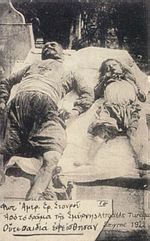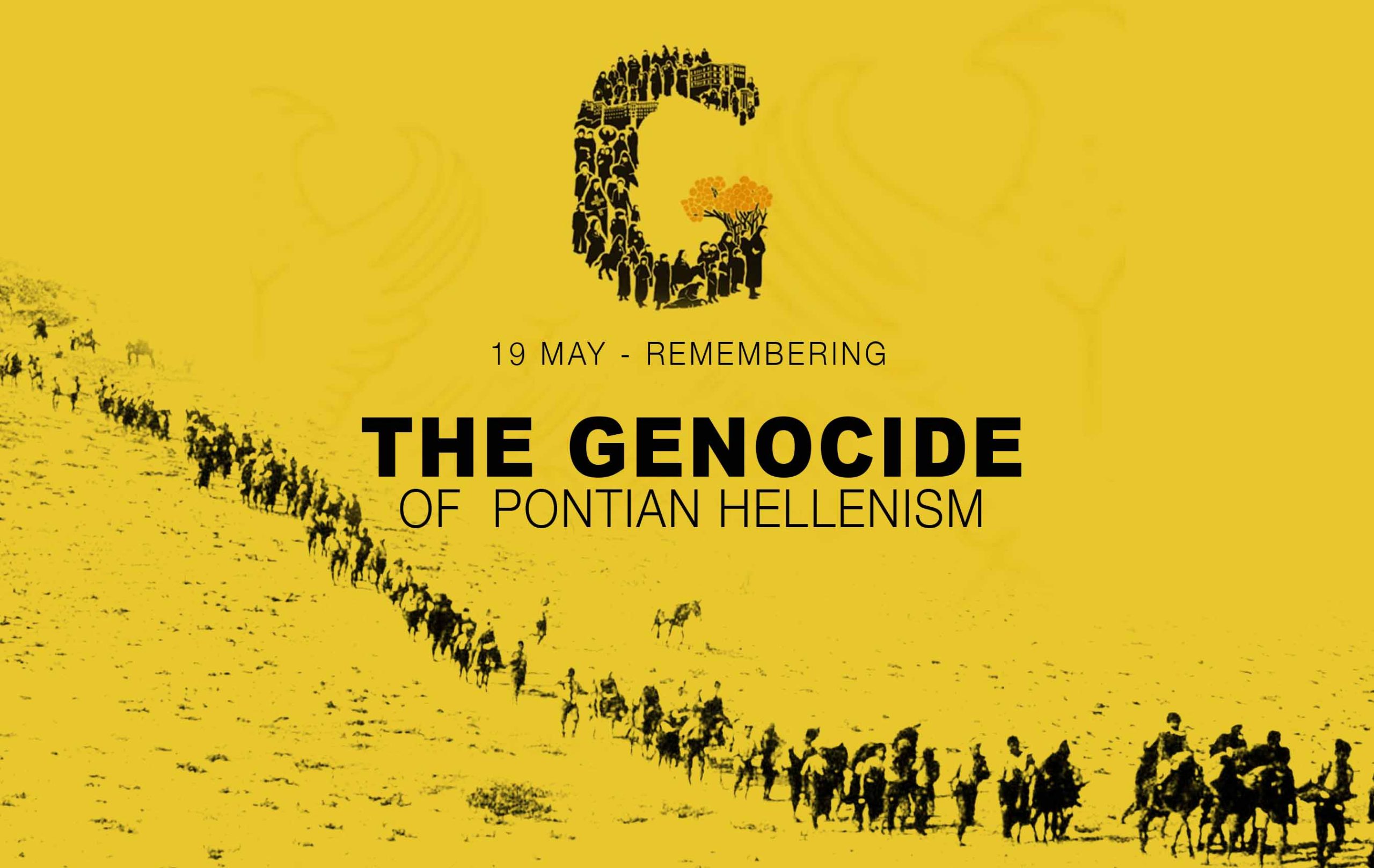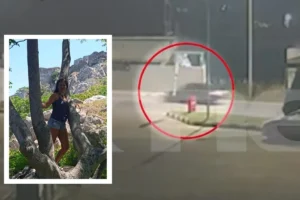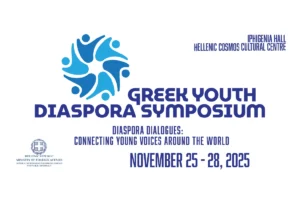The Greek genocide, part of which is known as the Pontic genocide, was the systematic ethnic cleansing of the Christian Ottoman Greek population from its historic homeland in Asia Minor, central Anatolia, Pontus, and the former Russian Caucasus province of Kars Oblast during World War I and its aftermath (1914–23). It was instigated by the government of the Ottoman Empire against the Greek population of the Empire and it included massacres, forced deportations involving death marches, summary expulsions, arbitrary executions, and destruction of Christian Orthodox cultural, historical and religious monuments. According to various sources, several hundred thousand Ottoman Greeks died during this period.[3] Some of the survivors and refugees, especially those in Eastern provinces, took refuge in the neighboring Russian Empire. After the end of the 1919–22 Greco-Turkish War, most of the Greeks remaining in the Ottoman Empire were transferred to Greece under the terms of the 1923 population exchange between Greece and Turkey. Other ethnic groups were similarly attacked by the Ottoman Empire during this period, including Assyrians and Armenians, and some scholars consider those events to be part of the same policy of extermination.[4][5][6][7][8]
The Allies of World War I condemned the Ottoman government-sponsored massacres as crimes against humanity. More recently, the International Association of Genocide Scholars passed a resolution in 2007 affirming that the Ottoman campaign against Christian minorities of the Empire, including the Greeks, was genocide.[9] Some other organizations have also passed resolutions recognizing the campaign as a genocide, as have the parliaments of Greece, the Republic of Cyprus and Sweden.
At the outbreak of World War I, Asia Minor was ethnically diverse, its population including Turks, Azeris, Greeks, Armenians, Kurds, Zazas, Circassians, Assyrians, Jews, and Laz people.
Among the causes for the Turkish campaign against the Greek population was a fear that the population would aid the Ottoman Empire’s enemies, and a belief among some Turks that to form a modern nation state it was necessary to purge from the territories of the state those national groups who could threaten the integrity of a modern Turkish nation state.[10][11][page needed]
According to a German military attaché, the Ottoman minister of war Ismail Enver had declared in October 1915 that he wanted to “solve the Greek problem during the war… in the same way he believe[d] he solved the Armenian problem.”[12]
Origins
The Greek presence in Asia Minor has been dated to at least the time of Homer around 800 BCE.[13] Prior to their conquest by the people the Greeks were one of several indigenous peoples living in Asia Minor.[14] The geographer Strabo referred to Smyrna as the first Greek city in Asia Minor.[14] Greeks referred to the Black Sea as the “Euxinos Pontos” or “hospitable sea” and starting in the eighth century BCE they began navigating its shores and settling along its coast.[14] The most notable Greek cities of the Black Sea were Trebizond, Sampsounta, Sinope and Heraclea Pontica.[14] In medieval times Trebizond became an important trade hub and capital of its own state, the Empire of Trebizond.
Events
In the summer of 1914 the Special Organization (Teşkilat-ı Mahsusa), assisted by government and army officials, conscripted Greek men of military age from Thrace and western Anatolia into Labour Battalions in which hundreds of thousands died.[15] Sent hundreds of miles into the Interior of Anatolia, these conscripts were employed in road-making, building, tunnel excavating and other field work but their numbers were heavily reduced through either privations and ill-treatment or by outright massacre by their Ottoman guards.[16] This program of forced conscription later expanded to other regions of the Empire including Pontus[citation needed].
Conscription of Greek men was supplemented by massacres and by deportations involving death marches of the general population[citation needed]. Greek villages and towns would be surrounded by Ottomans and their inhabitants massacred[citation needed]. Such was the story in Phocaea (Greek: Φώκαια), a town in western Anatolia twenty-five miles (40 km) northwest of Smyrna, on 12 June 1914 where the slain bodies of men, women and children were thrown down a well.[18]
In July 1915 the Greek chargé d’affaires explained that the deportations “can not be any other issue than an annihilation war against the Greek nation in Turkey and as measures hereof they have been implementing forced conversions to Islam, in obvious aim to, that if after the end of the war there again would be a question of European intervention for the protection of the Christians, there will be as few of them left as possible.”[19] According to George W. Rendel of the British Foreign Office, by 1918 “…over 500,000 Greeks were deported of whom comparatively few survived.”[20] In his memoirs, the United States ambassador to the Ottoman Empire between 1913 and 1916 wrote “Everywhere the Greeks were gathered in groups and, under the so-called protection of Turkish gendarmes, they were transported, the larger part on foot, into the interior. Just how many were scattered in this fashion is not definitely known, the estimates varying anywhere from 200,000 up to 1,000,000.”[21][page needed]
On 14 January 1917 Cosswa Anckarsvärd, Sweden’s Ambassador to Constantinople, sent a dispatch regarding the deportation decision of the Ottoman Greeks:
What above all appears as an unnecessary cruelty is that the deportation is not limited to the men alone, but is extended likewise to women and children. This is supposedly done in order to much easier be able to confiscate the property of the deported.[22]
Methods of destruction which caused death indirectly – such as deportations involving death marches, starvation in labour camps, concentration camps etc. – were referred to as “white massacres”.[20] Ottoman official Rafet Bey was active in the Genocide of the Greeks and on November 1916 he stated “We must finish off the Greeks as we did with the Armenians… today I sent squads to the interior to kill every Greek on sight…”.[23]
According to the official Ottoman documents, in January 1919, the Ottoman government allowed the return of some Greek who were deported, gave them financial aid and gave back their properties.[24]
The Turkish Courts-Martial of 1919-20 saw charges brought against a number of leading Ottoman officials for their part in ordering massacres against both Greeks and Armenians.[25]
In an October 1920 report a British officer describes the aftermath of the massacres at Iznik in north-western Anatolia in which he estimated that at least 100 decomposed mutilated bodies of men, women and children were present in and around a large cave about 300 yards outside the city walls.[20]
The systematic massacre and deportation of Greeks in Asia Minor, a program which had come into effect in 1914, was a precursor to the atrocities perpetrated by both the Greek and Turkish armies during the Greco-Turkish War, a conflict which followed the Greek landing at Smyrna[26][27] in May 1919 and continued until the retaking of Smyrna by the Turks and the Great Fire of Smyrna in September 1922.[28] An estimated 50,000[29] and to 100,000[30] Greeks and Armenians perished in the fire and accompanying massacres. According to Norman M. Naimark “more realistic estimates range between 10,000 to 15,000” for the casualties of the Great Fire of Smyrna. Some 150,000 to 200,000 Greeks were expelled after the fire, while about 30,000 able-bodied Greek and Armenian men were deported to the interior of Asia Minor, most of whom were executed on the way or died under brutal conditions.[31] There were also massacres of Turks carried out by the Hellenic troops during the occupation of western Anatolia from May 1919 to September 1922.[28]
For the massacres that occurred during the Greco-Turkish War of 1919–1922, British historian Arnold J. Toynbee wrote that it was the Greek landings that created the Turkish National Movement led by Mustafa Kemal:[32] “…The Greeks of ‘Pontus’ and the Turks of the Greek occupied territories, were in some degree victims of Mr. Venizelos‘s and Mr. Lloyd George‘s original miscalculations at Paris.”
Contemporary accounts
German and Austro-Hungarian diplomats, as well as the 1922 memorandum compiled by George W. Rendel on “Turkish Massacres and Persecutions”, have provided evidence for series of systematic massacres and ethnic cleansing of the Greeks in Asia Minor.[34][35][36] The quotes have been attributed to various diplomats, notably the German ambassadors Hans Freiherr von Wangenheim and Richard von Kühlmann, the German vice-consul in Samsoun Kuchhoff, Austria’s ambassador Pallavicini and Samsoun consul Ernst von Kwiatkowski, and the Italian unofficial agent in Angora Signor Tuozzi. Other quotes are from clergymen and activists, notably the German missionary Johannes Lepsius, and Stanley Hopkins of the Near East Relief. Germany and Austria-Hungary were allies of the Ottoman Empire in World War I.

The accounts describe systematic massacres, rapes and burnings of Greek villages, and attribute intent to Ottoman officials, namely the Ottoman Prime Minister Mahmud Sevket Pasha, Rafet Bey, Talat Pasha and Enver Pasha.[34][35][36]
Additionally, The New York Times and its correspondents have made extensive references to the events, recording massacres, deportations, individual killings, rapes, burning of entire Greek villages, destruction of Greek Orthodox churches and monasteries, drafts for “Labor Brigades”, looting, terrorism and other “atrocities” for Greek, Armenian and also for British and American citizens and government officials.[37][38] The newspaper was awarded its first Pulitzer Prize in 1918 “for the most disinterested and meritorious public service rendered by an American newspaper—complete and accurate coverage of the war”.[39] More media of the time reported the events with similar titles.[40]
Henry Morgenthau, the United States ambassador to the Ottoman Empire from 1913 to 1916 accused the “Turkish government” of a campaign of “outrageous terrorizing, cruel torturing, driving of women into harems, debauchery of innocent girls, the sale of many of them at 80 cents each, the murdering of hundreds of thousands and the deportation to and starvation in the desert of other hundreds of thousands, [and] the destruction of hundreds of villages and many cities”, all part of “the willful execution” of a “scheme to annihilate the Armenian, Greek and Syrian Christians of Turkey.”[41] However, months prior to the First World War, 100,000 Greeks were deported to Greek islands or the interior which Morgenthau stated, “for the larger part these were bona-fide deportations; that is, the Greek inhabitants were actually removed to new places and were not subjected to wholesale massacre. It was probably the reason that the civilized world did not protest against these deportations…”[42]
US Consul-General George Horton reported, “One of the cleverest statements circulated by the Turkish propagandists is to the effect that the massacred Christians were as bad as their executioners, that it was ’50–50.’ ” On this issue he comments: “Had the Greeks, after the massacres in the Pontus and at Smyrna, massacred all the Turks in Greece, the record would have been 50–50—almost.” As an eye-witness, he also praises Greeks for their “conduct […] toward the thousands of Turks residing in Greece, while the ferocious massacres were going on…”, which, according to his opinion, was “one of the most inspiring and beautiful chapters in all that country’s history.”[43][44]
Casualties



According to various sources the Greek death toll in the Pontus region of Anatolia ranges from 300,000 to 360,000. Estimates for the death toll of Anatolian Greeks as a whole are significantly higher, a team of American researchers found in the early postwar period that the total number of Greeks killed may approach 900,000 people.[2]
According to the figures by the Greek government together with the Patriarchate, a total of one million people were estimated to be massacred.[46]
According to the International League for the Rights and Liberation of Peoples, between 1916 and 1923, up to 350,000 Greek Pontians were reportedly killed in massacres, persecution and death marches.[47] Merrill D. Peterson cites the death toll of 360,000 for the Greeks of Pontus.[48] According to George K. Valavanis “The loss of human life among the Pontian Greeks, since the Great War (World War I) until March 1924, can be estimated at 353,000, as a result of murders, hangings, and from punishment, disease, and other hardships.”[49]
Constantine G Hatzidimitriou writes that “loss of life among Anatolian Greeks during the WWI period and its aftermath was approximately 735,370.”[50] Edward Hale Bierstadt states that “According to official testimony, the Turks since 1914 have slaughtered in cold blood 1,500,000 Armenians, and 500,000 Greeks, men women and children, without the slightest provocation.”.[51] At the Lausanne conference in late 1922 the British Foreign Minister Lord Curzon is recorded as saying “a million Greeks have been killed, deported or have died.”[52]
In 1916, Emanuel Efendi, an Ottoman deputy, said that “550,000 Greeks… were killed.”[53]
Genocide recognition
Terminology
Among the victims of the attrocities committed by the Turkish nationalist Army (1922–23) were hunderds of Christian clergy in Anatolia, such as metropolitan bishops (from left): Chrysostomos of Smyrna (lynched) Gregory of Kydonies (executed), Ambrosios of Moschonisia (buried alive).
The word genocide was coined in the early 1940s, the era of the Holocaust, by Raphael Lemkin, a Polish lawyer of Jewish descent. In his writings on genocide, Lemkin is known to have detailed the fate of Greeks in Turkey.[59] In August 1946 the New York Times reported:
Genocide is no new phenomenon, nor has it been utterly ignored in the past. … The massacres of Greeks and Armenians by the Turks prompted diplomatic action without punishment. If Professor Lemkin has his way genocide will be established as an international crime…[60]
The 1948 Convention on the Prevention and Punishment of the Crime of Genocide (CPPCG) was adopted by the United Nations General Assembly in December 1948 and came into force in January 1951. It defines genocide in legal terms. Some historians and other scholars employ other definitions of genocide, which they consider better suited for academic use.[61]
Before creation of the word “genocide”, the destruction of the Ottoman Greeks was known by Greeks as “the Massacre” (in Greek, η Σφαγή), “the Great Catastrophe” (η Μεγάλη Καταστροφή), or “the Great Tragedy” (η Μεγάλη Τραγωδία).[62] Contemporary accounts employed such terms as “annihilation”, “systematic extermination”, “persistent campaign of massacre”, and “wholesale massacre”.[43][63]
Academic
In December 2007 the International Association of Genocide Scholars (IAGS) passed a resolution affirming that the 1914–23 campaign against Ottoman Greeks constituted genocide.[64] Employing the term “Greek Genocide”, it affirmed that Ottoman Greeks were subject to genocide alongside other groups, namely Armenians and Assyrians. The resolution was adopted on 1 December 2007 and the press release issued by the organization on 16 December.[65] The IAGS resolution was passed with an “overwhelming” majority.[66][67]
Historian Mark Mazower states that the deportation of Greeks by the Ottomans was on a “relatively small scale and do not appear to have been designed to end in their victims’ deaths. What was to happen with the Armenians was of a different order.”.[68] Niall Ferguson has drawn a comparison between sporadic maccacres of Pontic Greek communities after 1922 and the fate of the Armenians.[69] As per the IAGS resolution, genocide scholars, such as Dominik J. Schaller and Jürgen Zimmerer, have stated that the “genocidal quality of the murderous campaigns against Greeks” is “obvious”.[70] Historian Angelos Elefantis “has expressed his shock at the use of the word “genocide” in relation only to the Smyrna massacres”,[71] although not concerning the anti Greek attrocities in general.
Seminars and courses in several western universities examine the events. These include the College of Charleston,[72] the University of Michigan Dearborn[73] and the University of New South Wales[74] which has a dedicated research unit.
Political
The Greek Parliament has passed two laws on the fate of the Ottoman Greeks; the first in 1994 and the second in 1998. The decrees were published in the Greek Government Gazette on 8 March 1994 and 13 October 1998 respectively. The 1994 decree affirmed the genocide in the Pontus region of Asia Minor and designated 19 May a day of commemoration, while the 1998 decree affirmed the genocide of Greeks in Asia Minor as a whole and designated 14 September a day of commemoration.[75] These laws were signed by the President of Greece but were not immediately ratified after political interventions. The leftist newspaper “Auge” (Αυγή, Dawn) had the initiative for freezing the application of this law. The subject became the center of a political debate between various Greek politicians, with the left being against. The president of the left-ecologists coalition Synaspismos party Nikos Konstantopoulos and A. Elefantis, known for his books on the history of the Greek communism, were some of the politicians who expressed their opposition to the decree. However, not all the left was unanimous on this. The non-parliamentary leftist intellectual and author George Karabelias bitterly criticized Elefantis and others (mainly from the left) who opposed the recognition of genocide and called them “revisionist historians”, accusing the Greek main-stream left for a “distorted ideological evolution”. He said that for the Greek left the 19th of May is a “day of amnesia”.[76]
In the late 2000s the Communist Party of Greece adopted the term “Genocide of the Greeks of Pontus” (Γενοκτονία Ποντίων) in its official newspaper Rizospastis and participates in memorial events.[77][78][79]
The Republic of Cyprus also officially recognizes the events as genocide.[80]
In response to the 1998 law, the Turkish government released a statement which claimed that describing the events as genocide was “without any historical basis”. “We condemn and protest this resolution” a Turkish Foreign Ministry statement said. “With this resolution the Greek Parliament, which in fact has to apologize to the Turkish people for the large-scale destruction and massacres Greece perpetrated in Anatolia, not only sustains the traditional Greek policy of distorting history, but it also displays that the expansionist Greek mentality is still alive” the statement added.[81]
On 11 March 2010, Sweden’s Riksdag passed a motion recognising “as an act of genocide the killing of Armenians, Assyrians/Syriacs/Chaldeans and Pontiac (sic) Greeks in 1915”.[82]
On 14 May 2013, the government of New South Wales was submitted a genocide recognition motion by Fred Nile of the Christian Democratic Party, and was later passed making it the fourth political entity to recognise the genocide.[83]
Reasons for limited recognition
The United Nations, the European Parliament, and the Council of Europe have not made any related statements. According to Constantine Fotiadis, professor of Modern Greek History at the Aristotle University of Thessaloniki, some of the reasons for the lack of wider recognition and delay in seeking acknowledgment of these events are as follows:[84][page needed]
- In contrast to the Treaty of Sèvres, the superseding Treaty of Lausanne in 1923 dealt with these events by making no reference or mention, and thus sealed the end of the Asia Minor Catastrophe.
- A subsequent peace treaty (Greco-Turkish Treaty of Friendship in June 1930) between Greece and Turkey. Greece made several concessions to settle all open issues between the two countries in return for peace in the region.
- The Second World War, the Civil War, the Military junta and the political turmoil in Greece that followed, forced Greece to focus on its survival and other problems rather than seek recognition of these events.
- The political environment of the Cold War, in which Turkey and Greece were supposed to be allies – facing one common Communist enemy – not adversaries or competitors.
In his book With Intent to Destroy: Reflections on Genocide, Colin Tatz argue that Turkey denies the genocide so as not to jeopardize “its ninety-five-year-old dream of becoming the beacon of democracy in the Near East”.[85]
In their book Negotiating the Sacred: Blasphemy and Sacrilege in a Multicultural Society, Elizabeth Burns Coleman and Kevin White present a list of reasons explaining Turkey’s inability to admit the genocides committed by the Young Turks, writing:[86]
Turkish denialism of the genocide of 1.5 million Armenians is official, riven, driven, constant, rampant, and increasing each year since the events of 1915 to 1922. It is state-funded, with special departments and units in overseas missions whose sole purpose is to dilute, counter, minimise, trivialise and relativise every reference to the events which encompassed a genocide of Armenians, Pontian Greeks and Assyrian Christians in Asia Minor.
and propose the following reasons for the denial of the genocides by Turkey, quote:[86]
- A suppression of guilt and shame that a warrior nation, a ‘beacon of democracy’ as it saw itself in 1908 (and since), slaughtered several ethnic populations. Democracies, it is said, don’t commit genocide; ergo, Turkey couldn’t and didn’t do so.
- A cultural and social ethos of honour, a compelling and compulsive need to remove any blots on the national escutcheon.
- A chronic fear that admission will lead to massive claims for reparation and restitution.
- To overcome fears of social fragmentation in a society that is still very much a state in transition.
- A ‘logical’ belief that because the genocide was committed with impunity, so denial will also meet with neither opposition nor obloquy.
- An inner knowledge that the juggernaut denial industry has a momentum of its own and can’t be stopped even if they wanted it to stop.
Memorials
Memorials commemorating the plight of Ottoman Greeks have been erected throughout Greece, as well as in a number of other countries including Germany, Canada, the United States and, most recently, Australia.[87]
source: https://military-history.fandom.com/wiki/Greek_genocide












